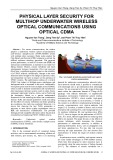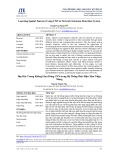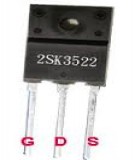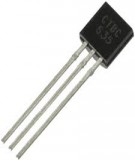
OREGON
DEPARTMENT
OF
TRANSPORTATION
Technical Services
Traffic-Roadway Section
Geom etronics Unit
200 Haw thorne Avenue S.E.
Suite B250
Salem , OR 97310
(50 3) 986-3103
Ron Singh, PLS
Geom etronics Manager
Chief of Survey s
(50 3) 986-30 33
Digital Signatures
For
Engineering Documents
30 September, 2008

Revision History
Authored by
Ron Singh, Geometronics Manager / Chief of Surveys
---------
First Draft – 6 November, 20 0 5
---------
First Release - 7 Decem ber, 20 0 5
Presented to Oregon DOT
---------
Updated for the International Highway Engineering Exchange Program Conference
Albany, New York
14 Septem ber, 20 0 7
---------
Updated for the National Association of County Surveyors Meeting
Am erican Congress on Surveying and Mapping Conference
Spokane, Washington
7 March, 20 0 8
---------
Updated for the American Council of Engineering Companies of Oregon Meeting
Beaverton, Oregon
18 March, 200 8
---------
Updated for the Professional Engineers of Oregon – J oint Engineering Conference
Bend, Oregon
23 April, 200 8
-----------
Final Release
30 September, 20 0 8

Oregon Departmen t of Transportation Digital Signatures
Geom etronics Unit Page 1 of 8
Ron Singh 30 Septem ber, 20 0 8
In tro d uctio n
The intent of this docum ent is to outline issues relating to the utilization of digital signatures on
engin eering related documen ts with the Oregon Departm ent of Transportation.
Traditional hand written signatures on physical engineering documents worked well during the
era of hand written/ drawn docum ents. In the early days of utilizing computers to simply speed
up the document development process with the intent of producing final documents on paper,
hand written signatures also worked reasonably well. However, the use of computers has
progressed into an era where electronic docum ents are transm itted; reviewed and approved;
utilized during the bidding process; utilized for stake-less construction; and archived for future
retrieval. To apply a hand written signature to these electronic files requires printing, signing
the paper docum ent, and then scanning it back in to an electronic file. This process loses the
electronic file’s native format and any imbedded intelligence, is time consuming, and
unnecessary. There is a better way: digital signatures.
This document does not intend to provide a complete solution for the use of digital signatures,
but rather to serve as a starting point for discussions within the agency and its engineering
partners; for development of internal policies; and possible legislative initiatives to modify
and/ or create new laws related to this issue.
It is expected that several related docum ents will follow detailing specific areas of interest such
as: How digital signatures enable the development of an engineering data management system
and stream line the engineering process; and the hardware, software, and procedures required to
digitally sign engineering documents.
Although the focus of this docum ent is the digital signing of engineering docum ents, the
concepts are alm ost identical to digital signatures on any digital file; therefore general concepts
will be described here.
W e t Sign ature s
A “wet” signature is usually a hand written stylized version of the signer’s name on a physical
document. Its purpose is not to prove identity, but rather to show deliberation, agreement,
and/ or inform ed consent to the content or intent of the docum ent. The historical legal concept
recognizes any mark made with the intention of authenticating the m arked docum ent as a
signature.
For engineering docum ents in Oregon, Oregon Revised Statutes 672.0 20 and 672.0 25 require
that the mark be a specific seal affixed to the document with the signature of the registered
professional. This law does not address digital signatures on digital docum ents and the general
understanding is that this requires physical documents with wet signatures. This specific
section of the law may need to be modified to enable the utilization of digital signatures on
engin eering documents.
For the purpose of this docum en t, the term engineering will
include all branches of engineering performed within the agen cy,
including surveying, geology, and any other branch that requires
the placement of a seal and signature on a final product.

Digital Signatures Oregon Departmen t of Transportation
Page 2 of 8 Geom etronics Unit
30 Septem ber, 20 0 8 Ron Singh
Th e Pro ble m s w ith W e t Sign atu re s
The signature itself may not bind the signer to the docum ent, unless the signer’s identity was
authenticated during the placement of a signature. In the United States this authentication may
be performed by a Notary Public. Even though the signature may be notarized, the signer may
later disown it by claim ing the sign ature was forged.
The signature itself does not certify the integrity of the document. The document may be either
intentionally or accidentally altered without effect on the existing seal and signature. Multiple
page docum ents may require a wet signature on each page. Without access to the document
with the original signature, a copy of the docum ent could be easily repudiated.
Today, most seals are sim ply Computer Aided Drafting (CAD) cells stored in a cell library open
to anyon e to copy, alter, and affix to any drawing. The signatures are not notarized and could be
challenged as to their authenticity.
The requirement for wet signatures significantly hinders the agency’s abilities to fully integrate
the development, transmittal, execution, archival, and retrieval of digital engineerin g
documents.
The implementation of a robust digital signature process will resolve these problems and
provide other benefits described throughout this document.
Ele ctro n ic Vs Digital Sign atu re s
Often the term s electronic signature and digital signature are used interchangeably to mean the
same thing. In the information security world, the two term s are distinctly different. The term
electronic signature m ay include scann ed images of hand written signatures; typed notations
such as / s/ J ane Doe; or signature blocks on em ail messages, etc. without any authentication
and/ or encryption system included. The term digital signature is more properly used to
describe a signature system applied to an electronic document that utilizes specific technical
processes to provide significant added security, authentication, and/ or encryption as described
below.
672.025 Practice of land surveying without registration prohibited; seal required. (1)
No person shall practice land surveying in this state unless the person is registered and has a
valid certificate to practice land surveying issued under ORS 672.002 to 672.325.
(2) Every registered professional land surveyor shall, upon registration, obtain a seal of
the design authorized by the State Board of Examiners for Engineering and Land Surveying.
Every final document including drawings, specifications, designs, reports, narratives, maps
and plans issued by a registrant shall be stamped with the seal of and signed by the registrant.
The signature and stamp of a registrant constitute a certification that the document was
prepared by the registrant or under the registrant’s supervision and control.

Oregon Departmen t of Transportation Digital Signatures
Geom etronics Unit Page 3 of 8
Ron Singh 30 Septem ber, 20 0 8
W h at is a D igital Sign atu re ?
A digital signature is to an electronic document as a handwritten signature is to a paper one and
much more. A digital signature provides signer authentication, docum ent authentication,
possible document encryption, and efficiency.
Instead of using pen (wet signature) and paper, a digital signature uses digital keys to attach the
identity of the signer to the document and record a binding commitment to the content of the
document. Digital signatures enable "authentication" of digital documents, assuring the
recipient of a digital document of both the identity of the sender and the integrity of the
document. A digital signature provides “who” signed the digital file. A tim e stam p of that digital
signature provides “when” the digital file was signed.
A robust digital signature system m ust be capable of creating a signature that is unique to th e
person using it; is capable of verification; is under the sole control of the person using it; and is
linked to the document in such a way that if any part of the document is altered, the digital
signature is rendered invalid.
W h y u s e D igital Sign atu re s ?
A digital signature actually provides a greater degree of security than a handwritten signature.
The recipient of a digitally signed document can verify both that the document originated from
the person whose signature is attached and that the document has not been altered either
intentionally or accidentally since it was signed. Furtherm ore, secure digital signatures cannot
be repudiated.
A significant ben efit to the agency is in the reduction of paper handling and maintaining the
data in a digital format. Signing documents digitally will enable and greatly facilitate the
developm ent of an Engineering Data Managem ent System resultin g in greater project delivery
efficiency.
Digital signature technology has undergone thorough research and developm en t for over a
decade. It is not an em erging technology. Digital signatures have been accepted in several
national and international standards developed and accepted by many corporations, banks, and
government agencies.
The likelihood of malfunction or a security problem in a digital signature system designed and
im plemented as prescribed in the industry standards is extremely rem ote. Less robust digital
signature systems should be avoided.
W h at is n e e de d to cre ate a D igital Sign atu re ?
Creating a digital signature requires software, a signin g certificate, and optionally a piece of
hardware to provide further security with a signer’s private key. Creating the signing certificate
involves creating a public-private digital key pair and optionally obtaining the services of a
Certificate Authority.
The public key certificate creates proof of the identity of the signer and made available to an yone
who needs to verify the signature. The com bin ation of the public key and proof of identity result
in a public key certificate - also called a signer's certificate.





![Biến Tần FR-A700: Sổ Tay Hướng Dẫn Cơ Bản [Chi Tiết]](https://cdn.tailieu.vn/images/document/thumbnail/2019/20191130/cac1994/135x160/1741575103503.jpg)
![Xử lý số tín hiệu: Tài liệu thí nghiệm [Chuẩn SEO]](https://cdn.tailieu.vn/images/document/thumbnail/2018/20180821/danhvi27/135x160/7141534836177.jpg)






![Trắc nghiệm Mạch điện: Tổng hợp câu hỏi và bài tập [năm hiện tại]](https://cdn.tailieu.vn/images/document/thumbnail/2025/20251118/trungkiendt9/135x160/61371763448593.jpg)












